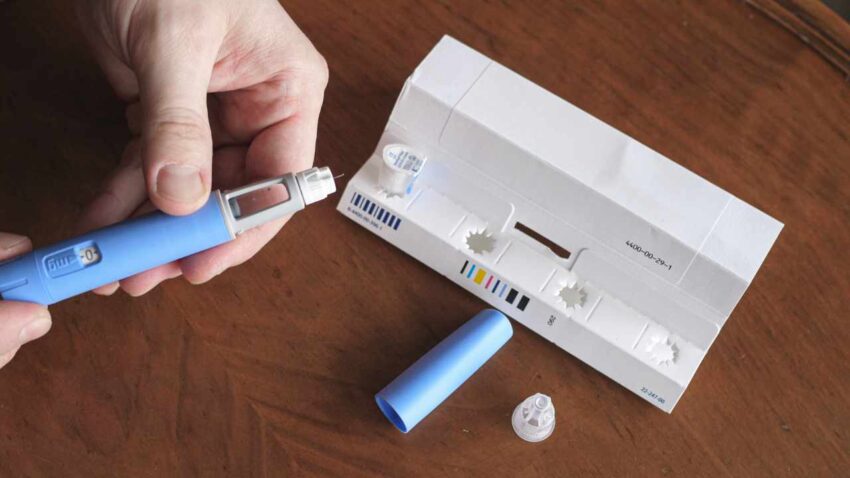Ozempic (semaglutide) has made headlines as a revolutionary GLP‑1 receptor agonist—designed for type 2 diabetes management but widely adopted off‑label for weight loss. However, as its popularity soared, so did concerns over serious side effects and lack of adequate warning, sparking waves of lawsuits. Here’s the in‑depth legal landscape:
Multidistrict Litigation (MDL): Coordination of Lawsuits
-
Since February 2024, lawsuits related to Ozempic and similar GLP‑1 drugs have been consolidated into a Multidistrict Litigation (MDL No. 3094) in the Eastern District of Pennsylvania, presided by Judge Karen Spencer Marston.
-
As of July 2025, there are approximately 1,997 active lawsuits within the GLP‑1 MDL
-
Claimants allege severe injuries linked to Ozempic—particularly gastrointestinal issues like gastroparesis, ileus, and intestinal blockages—as well as vision loss, blood clotting events, pancreatitis, kidney injury, and gallbladder disease .
Core Allegations: What Plaintiffs Claim
a) Gastroparesis & Gastrointestinal Injuries
-
Many lawsuits focus on gastroparesis (stomach paralysis), where the stomach can’t properly empty, causing persistent nausea, vomiting, bloating, dehydration, and malnutrition.click here
-
Some patients also cite ileus, intestinal blockage, or obstruction. Notably, the FDA did not include these warnings in Ozempic’s label until September 2023, despite earlier prescriptions .
b) Vision Loss: NAION (Non‑arteritic Anterior Ischemic Optic Neuropathy)
-
Multiple lawsuits allege Ozempic (semaglutide) caused NAION, a sudden and irreversible loss of vision. Studies show semaglutide users have up to a 7‑fold increased risk compared to non‑users.
-
Plaintiffs argue Novo Nordisk failed to update Ozempic’s label to reflect these risks, choosing aggressive marketing instead Miller & ZoisMotley Rice.
c) Other Alleged Injuries: Blood Clots, Gallbladder Disease, Pancreatitis, Kidney Injury
-
Reports suggest semaglutide may elevate risk of deep vein thrombosis (DVT) and pulmonary embolism (PE)—one study showed a 266% higher risk compared to placebo.
-
Rapid weight loss driven by these drugs may also promote gallstones or gallbladder inflammation, leading to conditions like cholecystitis and possibly emergency surgery.
Legal Developments & Case Volume Trends
-
The MDL has seen explosive growth—from 1,443 cases in early 2025 to nearly 2,000 by mid‑2025
-
A key Daubert (Rule 702) hearing is scheduled for May 14, 2025—specifically aimed at evaluating admissibility of scientific expert evidence regarding causation
-
No global settlements have been reached. Plaintiffs seek compensation ranging from $250,000 to upwards of $1 million, depending on severity
Supply Concerns, Compounders, and Defendants’ Strategies
-
During Ozempic’s drug shortage, compounding pharmacies produced knockoff semaglutide versions. Novo Nordisk has filed lawsuits against these compounders—e.g., Prism Aesthetics, Mochi Health—claiming they sold unsafe, unapproved drugs Reuters.
-
The FDA declared the shortage over on February 21, 2025, and plans to ban compounded versions—though enforcement is deferred pending litigation Health.
-
Despite crackdowns, some compounded “alternative” versions persist via legal loopholes like dosage tweaks or delivery changes The Wall Street Journal.
-
Plaintiffs’ attorneys argue that Novo Nordisk undermined its own failure-to-warn defense by delaying label updates and aggressively promoting Ozempic for off-label uses to boost profits
FDA Label Updates & Timeline of Warnings
-
Important FDA updates include:
-
March 2022: Gallbladder disease warning added
-
September 2023: Ileus, intestinal blockage included
-
November 2024: Warning for pulmonary aspiration during anesthesia
-
January 2025: Added risk of pancreatitis and kidney injury Motley RiceForbes.
-
-
Doctors prescribed Ozempic to many patients before the FDA established these warnings, which led those patients to file “failure to warn” claims
Conclusion
The lawsuits surrounding Ozempic (semaglutide) center on allegations that the drug caused severe, life‑altering health injuries—most notably gastroparesis, vision loss, blood clots, gallbladder disease, pancreatitis, and kidney issues—without adequate warning from the manufacturer, Novo Nordisk. The litigation has ballooned into a major MDL in Pennsylvania, reflecting growing public concern and rising case volume. With key hearings underway and no settlements yet, outcomes remain uncertain—but these developments signal a critical moment for pharmaceutical accountability, patient safety, and regulatory transparency.
Frequently Asked Questions (Q&A)
Q1: What is an MDL and why is Ozempic involved?
A: The federal court groups similar cases into a Multidistrict Litigation (MDL) to streamline pretrial proceedings—in Ozempic’s case, the court centralized them in Pennsylvania. Ozempic’s cases involve common allegations relating to GLP‑1 drug injuries.
Q2: What injuries are plaintiffs claiming?
A: Major claims include gastroparesis/stomach paralysis, vision loss (NAION), blood clots (DVT/PE), gallbladder disease, pancreatitis, kidney injury, and more.
Q3: When did the FDA update Ozempic’s warning label?
A: Key updates came between 2022 and early 2025: gallbladder disease (Mar 2022), intestinal blockage/ileus (Sep 2023), aspiration risk (Nov 2024), and pancreatitis/kidney injury (Jan 2025).
Q4: Are there any settlements yet?
A: The parties have not reached any settlements, and the litigation continues to move forward. Claim estimates range from $250,000 to $1 million per case.
Q5: What is the Daubert hearing happening in May 2025?
A: The court holds the hearing to decide whether it will admit the plaintiffs’ expert testimony linking Ozempic to the alleged injuries.
Q6: Did compounded or counterfeit Ozempic contribute to the issue?
A: Yes, during shortages, compounding pharmacies created unapproved versions. Novo sued such entities. FDA has since banned these but enforcement is pending legal decisions
